The satellites will be developed at the research universities and 70 schools in the next three years. * According to Dr. Meir Ariel, director of the Herzliya Science Center and the mastermind behind the program, "Israel 70" is based on the success of the Dokifat 1 satellite and the combat launch of Dokifat 2. The project will promote scientific education and research in academia and the space industry and contribute to the scientific and technological prestige of the State of Israel
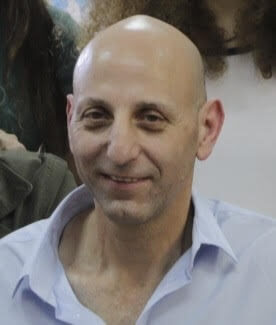 Note - 1/5/17 - So far, many schools have already expressed interest in the project and many satellites have already been purchased, some by school chains.
Note - 1/5/17 - So far, many schools have already expressed interest in the project and many satellites have already been purchased, some by school chains.
The original knowledge
The need to encourage science studies led to a unique proposal to build and launch into space a fleet of 70 satellites to mark the 70th year of independence for the State of Israel. The satellites will be built by 70 schools with scientific majors, cyber majors and space sciences, and by Israeli research universities and with the assistance of the aerospace industry. The Ministry of Science, Technology and Space is also looking into supporting the project and will encourage the creation of connections between the education system and the space industry, the academy, and the IDF.
The program is based on the legacy of knowledge and the extensive experience gained in the development of the tiny satellites "Dokifat 1" and "Dokifat 2", on the ability to carry out complex (and distributed) educational projects in the center and on the periphery, and on the high ability of the engineers of the Israeli aerospace industry and space industry to guide and lead the students. The initiators of the program, the Director of the Science Center in Herzliya Dr. Meir Ariel and Lieutenant Colonel (res.) Professor Haim Ashad, one of the founders of the Israeli space program, are confident in the ability of the program's steering team to implement it in a relatively short time frame and without significant risks.
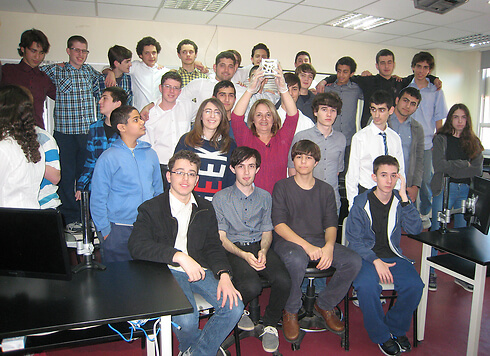
According to Dr. Meir Ariel, the group of satellites will cover the surface of the earth in a formation flight and will be able to stay and function in space for several years. The satellite fleet will have the ability to load algorithms from the ground and will serve as a platform for scientific experiments and the development and testing of future technologies. The satellites will be controlled by ground control stations that will be set up in schools and universities throughout Israel, but in addition they will also talk to each other and act as one complex entity with a learning and developing intelligence.
How much will the program cost?
"The cost of the entire program is estimated at approximately 25 million dollars and includes four main components: the cost of hardware and satellite components, the cost of ground equipment, the cost of launching and the cost of training by expert scientists and engineers. The project will last about 36 months and will not require dedicated engineering infrastructure in the schools. Pupils, students and researchers will build the satellites in one of three satellite development and integration centers that will be established in the north, center and south of the country. Natural places to locate these centers are the Technion, Herzliya Science Center and Ben Gurion University. The three institutions have a basic engineering infrastructure for the development of tiny satellites."
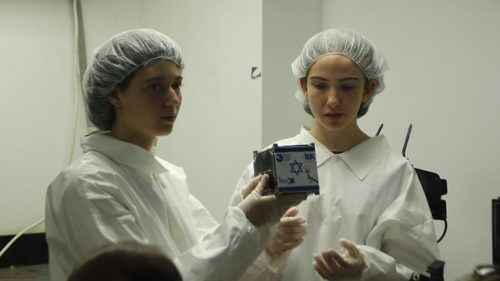
Who will be the teachers who will be able to deliver such a complex project in the high schools and how will the students get the necessary knowledge to build a satellite?
Ariel: "The project will mainly be based on the science teachers in the education system (physics, cyber and computer science), on the team of instructors of the Herzliya Science Center, and on engineers and scientists who are experts in the relevant fields of knowledge from academia and the Israeli space industry."
"Learning in the schools will include core space subjects, but will mainly be project-based and oriented towards building a tiny satellite. The main scientific and pedagogical benefit will be obtained from the very performance of advanced R&D in all its phases by students, and accordingly the students will engage in tasks inherent to building a satellite: research and development, analysis, simulation and performance research, conducting supporting studies, or even accepting overall responsibility for the development of a satellite subsystem."
"At the end of their studies, the students will submit a five-credit thesis in research physics, or cyber or engineering sciences (according to the "Satellites and Space Sciences" program built by the Herzliya Science Center in cooperation with the Intelligence Corps and the Aerospace Industry's Space Factory, and which was launched By the Ministry of Education for the year 5 XNUMX)."
.
What types of satellites can be launched?
Ariel: "The infrastructure will of course be based, as in Duchifat, on CubeSat satellites (also known as nano-satellites), which as we know can be designed as a single unit (with dimensions of 10 x 10 x 10 cm), double size 2U (ie 10 x 10 x 20 cm ), or a 3U triangle (with dimensions of 10 x 10 x 30 cm) etc.
The basic satellites in the batch will be called "pawn", the size of one cube, and will contain an airborne computer, an electrical control system, a receiver and transmitter and solar panels, but usually without additional scientific equipment or complex spacecraft systems. Pion satellites will be used as relays and will be able to communicate with the ground stations and with other satellites in the constellation. The second type of satellites in the constellation, known as "Abir", will be based on 2U or 3U satellites depending on the need, will have more complex technological capabilities and the ability to control other satellites in the constellation. "Abir" satellites will be equipped with a direction control system and some even with a tiny propulsion system, and will also be able to carry additional scientific equipment."
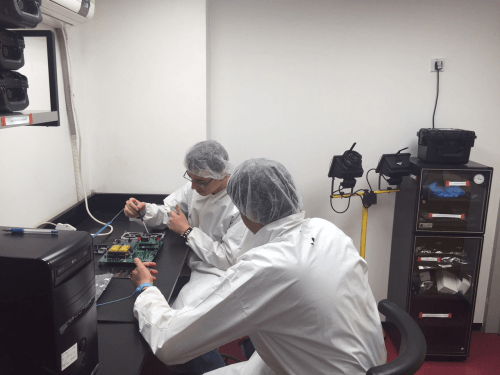
Will all the satellites be ready for launch by May 2018?
"Not necessarily. To reduce the risk, a modular plan was built that will span several years. A failure in one of the satellites does not endanger the entire program, it will be possible to launch another in its place after analyzing the failure and improving the design."
What experiments can be performed using these satellites?
Ariel: "The system will be used as a space technology and pedagogical platform for science students, students, scientists and engineers, to conduct experiments and develop future technologies. Space technologies can be tested on board tiny satellites while saving huge costs compared to experimental systems based on launching large satellites."
"Already today significant breakthroughs are being made in the miniaturization of devices used for central space missions - radiation shielded computers, transmitters and receivers, magnetometers, spectrometers, and cameras have been reduced to sizes compatible with a tiny satellite and the cube satellite standard."
"Thanks to the cellular revolution, sensors can be miniaturized and placed on a nano-satellite. For example, the Department of Earth Sciences at Tel Aviv University is examining the feasibility of launching a fleet of satellites to improve weather monitoring and, for example, predict hurricanes in real time."
"Cameras and detectors in frequency ranges that will make it possible to identify centers of pollution, locate thermal anomalies and transmit critical information about natural disasters such as volcanic eruptions and fires. Tiny multi-spectral cameras may also be used in simple precision agriculture applications."
"Another application for deploying tiny satellites is in the development of an autonomous and universal communication network that will not be affected by loads and failures of terrestrial networks in times of emergency, and in the testing of cheap global navigation systems (based on tiny satellites equipped with atomic clocks). The system can also be used as a platform for developing fast algorithms for processing signals with low computational complexity, adapted to the limited processing capacity of a tiny satellite."
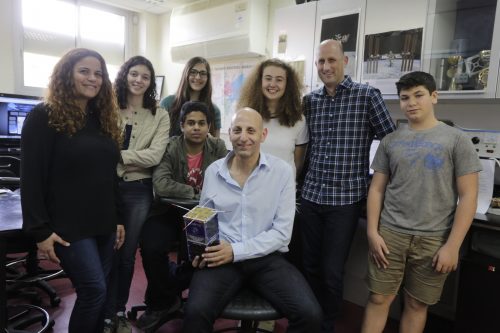
Another experiment could be in the field of tiny electric propulsion. At the "Asher Space Research Institute" at the Technion, a tiny electric motor is being developed that could be installed on a cube satellite in the near future. Such an engine will allow experiments to be carried out in low-altitude trajectory maintenance, direction control, and trajectory changes of individuals in a squadron with the intention of achieving optimal coverage of the Earth at a low cost."
According to Prof. Haim Ashed, one of the initiators of the program: "The band may be used for the purpose of research in the disposal of space debris, a topic that is currently a high priority in the space bodies of the United States and the European Union and attracts correspondingly high budgets."
Prof. Ashad adds that "even the tiny launcher that is being developed by Israeli space industry workers (in collaboration with the University of Padova in Italy) will in the future be integrated into the Israel 70 experimental program and may lift some of the tiny satellites in the fleet into orbit in space."
In conclusion, Ariel says: "As a general rule, in any task that requires the performance of multiple measurements in different orbits and locations in space, there is an advantage to casting tiny satellites over a single satellite, no matter how elaborate and expensive it may be. Another inherent advantage of having a satellite fleet is the high redundancy: losing several satellites from a large fleet will not cancel the mission, unlike a single satellite that failed and stopped working. "
More of the topic in Hayadan:

4 תגובות
I can't believe they didn't think about all the future failures. I believe that the advantages outweigh the disadvantages. The formula says the technology wins hahahahaha big time
The initiative is welcome in the bottom line.
At their operating altitude there are still enough air molecules so that they will be subject to a little friction with the atmosphere, which causes them to slow down and lower their trajectory until they burn when entering the atmosphere.
A large part of the satellites can themselves become space debris, on a large scale, because of their dispersion.